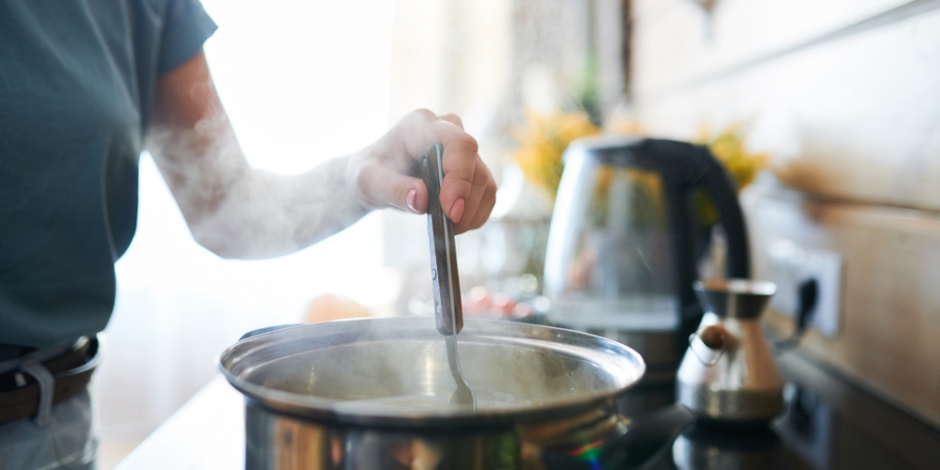
When you hear the phrase “air pollution,” what comes to your mind first? Many people here in Westchester, Putnam, and Fairfield Counties think of things like car exhaust, power plants, and pesticides; but what if we told you some of the most common sources of air pollution are actually hiding inside your own home?
Researchers have spent decades documenting outdoor air pollution, but only recently have they begun to realize just how polluted indoor air can be. In fact, according to the EPA, concentrations of some pollutants can be two to five times higher indoors than they are outdoors. This becomes all the more worrisome when you consider the fact that the average American spends about 90% of their time indoors.
So, what exactly is harming indoor air quality (IAQ) in so many homes? One answer may surprise you: cooking.
Cooking & Indoor Air Quality
Many homeowners here in New York and Connecticut are surprised to learn about the impact that everyday activities like cooking, cleaning, and simply breathing can have on their indoor air quality. The impact is so surprising, in fact, that a recent New Yorker article titled “The Hidden Air Pollution Inside Our Homes” explores it.
Cooking, in particular, can introduce a number of contaminants to indoor air. This is because cooking often involves using combustion appliances and heating ingredients at high temperatures. Combustion appliances like gas stoves can cause nitrogen dioxide and carbon monoxide to seep into your indoor air, while heating oils and fats can release harmful volatile organic compounds (VOCs). The extra heat that cooking produces can also cause countertops and cabinets to off-gas VOCs like formaldehyde.
And when you accidentally burn the bacon? That smoke is sure to harm your IAQ too.
What Are Volatile Organic Compounds (VOCs)?
Volatile organic compounds are gases released from some liquids and solids. They are responsible for much of what we smell. Many common household furnishings release them, including carpets, furniture, paint, glue, cleaning products, and cosmetics.
VOCs are a major part of the puzzle when we talk about the contaminants that cooking brings into the home. Whether you’re using a stove or oven, heating a fat like butter or olive oil, or using an aerosol baking spray, chances are you’re sending VOCs into your indoor air.
VOCs can cause significant health effects even after short periods of exposure — such as headache, confusion, nausea, coughing, skin irritation, and fatigue. So, it’s important to do what you can to minimize VOC concentrations in your home.
Solutions for Healthier Indoor Air
Fortunately, you don’t have to give up a love of cooking to keep your indoor air healthy. These key steps will help protect your home’s indoor air quality.
Use the kitchen range hood
The kitchen range hood isn’t just for when you’ve burnt the bacon. Use it every time you cook and leave it on for a few minutes after cooking to vent any excess moisture and contaminants outdoors. (If your range hood does not vent to the outdoors, now is a good time to consider an upgrade!)
Schedule a Whole Home Evaluation
If you’ve ever wondered how to test your air quality, this is it. An indoor air quality test shows you the levels of contaminants in your indoor air so you can know exactly which actions to take to improve indoor air quality.
Install whole-house ventilation
After home air quality testing, your home health expert will show you which indoor air quality solutions to implement in your home. One thing we often recommend at Healthy Home is installing a whole-house ventilation system. These systems keep fresh air circulating throughout your home while also controlling humidity.

